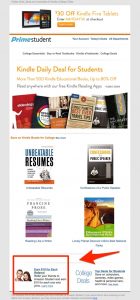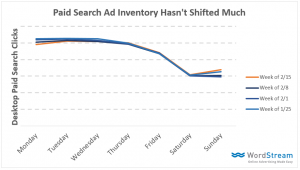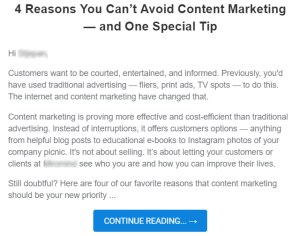Instagram has become one of the most important social networks around. Models have launched careers, and companies have built huge customer bases thanks to the image-based service.
Can you do the same? Of course you can, and we’ve got the perfect case study to prove it.
Nathan Chan launched Foundr Magazine in 2013 as a side project. Twelve months later, he’d built an Instagram following of over 500,000 users. That number is now over 800,000, and this attention has led to more than 230,000 email subscribers.
In the process, Foundr made a name for itself as a serious entrepreneurial magazine.

Nathan recently joined us to break down his Instagram strategy. He gave us his 5-step plan, which we’ll go over below.
Now, let’s get to steppin’.
For Nathan’s complete Instagram master class, watch the webinar here.
1. Utilize your bio
When you first get started, you’ll need to set up your account and bio.
You’ll want to make sure you’re using your bio link correctly. Since Instagram only gives you one clickable link, it’s precious real estate.
You may be tempted to send Instagram users straight to your website’s homepage, but you’d be missing out on opportunities to gather information and create longer-lasting relationships.
Build a landing page with an offer for your Instagram followers. This could be a free ebook, a video you know they’ll love, or the opportunity to subscribe to your newsletter. It could also be a special discount – 10% off your best-selling product, for example.
Now, you’re using the extra attention from Instagram to drive conversions.
Foundr changes its bio link constantly, but always with the same goal: to add to its email list.
Note: Since Instagram is a mobile-first social platform, these landing pages need to be mobile-friendly. Nathan has tested this extensively, and finds that short content and an easy opt-in are essential.
Once you’ve optimized your bio link, it’s time to start posting.
2. Have a solid content strategy
If you’re going to succeed on Instagram, you need to know what to post. Foundr has some basic rules for content creation:
- Be consistent
- Have a theme for your account
- Aesthetic is everything
- Use video
Here’s how you can use these ideas in your own content.
Be consistent
Have a consistent message, and post a lot. In 18 months, Foundr only missed one day of posting on Instagram. They’re very proud of this fact.
Nathan describes Instagram as having a snowball effect. “The more you post, the faster you grow.” He posts between six and eight times every day, as well as responding to comments and interacting with other users.
The reward is a very high engagement rate. Their posts often receive over 30,000 likes, and are shared all over the platform. This hands-on marketing has been hugely successful.
And it really is hands-on. Unlike other social networks, you have to send Instagram posts manually. There’s still no way to schedule Instagram updates – the platform doesn’t allow it.
However, there are tools like Later and Curalate which let you plan posts and remind you when it’s time to hit send.
Have a theme for your account
Companies also need to be consistent in their message. Whatever your industry, your account needs to match the interests of your target audience. According to Nathan, your theme should look like what your customers aspire to.
Foundr is a magazine for young entrepreneurs. For them, engaging content includes quotes and motivational images that “trigger some form of emotion.” They post ideas from famous business people, quotes from film and television characters, and prompt a response from their audience.
Aesthetic is everything
Instagram is a visual platform. To get noticed, you need attractive content. The best accounts have a clear color scheme and consistent topics.
But what if you don’t take great photos? Not everyone can be Annie Leibovitz. Foundr doesn’t even have a full time graphic designer on staff, so they use very few original photos.
Instead, they use tools like Wordswag, Phonto, and Typorama to create quote images. These tools make it easy to create the kinds of content that Instagram users love. With a bit of text and a few mouse-clicks, you can easily turn words into images:

Use video
Nathan strongly suggests getting into video marketing. Video made up 55% of mobile traffic in 2015. That number will be 75% by 2020.
Foundr uses video to promote their other (non-Instagram) content:
They also share inspirational clips from movies and fun animations. This way, they have a variety of content types, and a more interesting feed. Now the next step requires taking a very personal approach to communicating on Instagram.
Step 3: Do things that don’t scale
While your account is still growing, do things that can’t be automated – and do them yourself. Especially when you’re starting out, a personal touch gives a voice to your profile. Some tactics include:
- Explore hashtags to see what people are discussing
- Engage directly with other users with comments
- Use your name in comments to let people know who they’re talking to
- Join conversations on competitor pages
- Do your best to respond to every comment while your account is still small
As a related example, Foundr recently launched a Snapchat account. While it’s growing, Nathan personally responds to every message they receive. In his words, “when you treat your community like gold, it comes back in droves.” Another of Nathan’s favorite tactics is working with influencers. While there are lots of great tools to find influencers automatically, outreach doesn’t scale. You need to build personal relationships. That means sending emails, contacting social media VIPs directly, and meeting people face to face.
Step 4: Use shoutouts
During the webinar, Nathan was emphatic: building partnerships is crucial to growing your brand. This is true on social media, where a post from someone important can reach thousands of new users. So how do you make connections?
Pay for a shoutout
If you have the budget, consider paying to work with influencers. For those interested, Nathan shared a slide showing the rates for some Instagram influencers:

You could approach influencers directly. Create an outreach list, make offers, and be ready to negotiate.
There are also agencies and apps are popping up everywhere to serve as go-betweens. They pair paying brands with willing influencers, based on relevance. Tribe, The Shelf, and Forbes all provide this service.
You could also try the app Influential, which lets you create paid influencer campaigns from your phone. Offers are sent to social media influencers, who prepare a campaign and request approval.
Ask for a “share for share”
This is Nathan’s favorite free method for working with influencers. Offer to share another Instagram user’s content, in exchange for them sharing yours. This puts your content in front of a whole new audience.
When doing this, be realistic. Don’t approach accounts with hundred of thousands of followers, unless you have hundreds of thousands yourself. Work with users who have the same or slightly more followers than you so you’re both getting a fair deal.
Offer free stuff
If you sell a product or service, you can also woo influencers with free swag. Nathan gave the example of Morris Motley, a high-end men’s hairdressing studio in Melbourne. They offered well-known fashion influencer Nick Wooster a free haircut, in exchange for an Instagram post:
This isn’t a revolutionary concept.
Provide something of value – time, shares, product, or money – and add influencer marketing to your arsenal.
Step 5: Embrace analytics
analytics to track what works for you and to find out where you’re falling short.
In particular, the magazine tracks their follower growth, return on investment of their influencer campaigns, and who’s sharing their Instagram content.
To do this, they use the following tools:
SocialBlade
SocialBlade helps them track their account growth. It tracks data from Instagram, YouTube, and Twitch, and puts it into neat graphs. It’s also free.
SocialRank
SocialRank shows them who their top-ranked Instagram followers are. This lets them find influencers who already know them, making it easy to choose the right partners.
Iconosquare
The magazine uses Iconosquare to find the best times to post on Instagram. The tools also tells you how your content is performing, and your overall engagement rates.
Minter
Minter gives them detailed demographic information about their followers. It tells them their followers’ gender and geographic locations, and which content performs best on Instagram.
Digital & Social Articles on Business 2 Community(225)
Report Post






